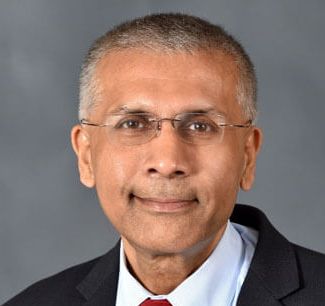News
Article
RECORD-MI: Real-World Study Highlights Risk of HF After a Heart Attack
Author(s):
Javed Butler, MD, MPH, MBA, presented the analysis based on patient data from the Baylor, Scott, and White health system during the final hours of the European Society of Cardiology 2023 Congress, which concluded Monday.
Patients who have a heart attack are much more likely to develop heart failure (HF) in the following year than they are to have a second heart attack, and it is the HF that puts them at higher risk of death or hospitalization, according to new data presented on the final day of the European Society of Cardiology (ESC) 2023 Congress.
Butler

Javed Butler, MD, MPH, MBA, of the University of Mississippi and the Baylor, Scott, and White (BSW) Research Institute, presented data from the RECORD-MI study during one of the final sessions of the Congress, “Registries on Prevalent and Incident Heart Failure.” RECORD-MI uses real-world data from BSW electronic health records to better understand the characteristics of patients who appear at the hospital with a myocardial infarction (MI) and what happens to them afterward.
As Butler explained, there have been significant advances in the past decade in coronary vascularization and in drug therapy for secondary prevention of recurrent MI. “However, it has been over 2 decades since a drug was approved primarily to reduce the risk of new-onset heart failure development post myocardial infarction,” Butler said.
The study, funded by Boehringer Ingelheim and Eli Lilly, comes as the makers of empagliflozin (Jardiance) are racing against AstraZeneca, makers of rival sodium glucose co-transporter 2 (SGLT2) inhibitor dapagliflozin (Farxiga) to demonstrate benefits to patients post acute MI. During ESC 2023, Butler presented the baseline characteristics of the patients enrolled in the EMPACT-MI trial, which is examining the safety and efficacy of empagliflozin in this setting.
RECORD-MI collects records from 28 hospitals across the BSW system and uses data from every patient aged 18 or older who was discharged with a diagnosis of MI from 2015 through 2021. From there, investigators looked for evidence post MI of incident HF, another MI, all-cause mortality, all-cause hospitalization, and cardiovascular (CV) hospitalization.
The study population included 6804 patients, including 6556 patients with a primary diagnosis of acute MI who were discharged alive. Of this group, 5047 had no prior history of HF, including 1578 who developed new-onset HF while hospitalized. The overall cohort had an median age of 68.9 years, 40.3% were women, and 16.7% were current smokers. By type of HF:
- 23.6% had left ventricle ejection fraction (LVEF) below 40%, or HF with reduced ejection fraction
- 18.0% had LVEF 41% to 49%, or HF with mildly reduced ejection fraction
- 58.4% had LVEF of 50% or above, or HF with preserved ejection fraction (HFpEF); notably, this type of HF had no FDA-approved therapies until 2021
By type of MI, 1586 patients had an ST-elevation MI (STEMI), which is more serious, compared with 5218 who had non-STEMI episodes. Butler presented tables cross-referencing patients by LVEF and STEMI status, prior HF status, and gender, age, and smoking status. Of note, 5216 patients in the cohort had no prior HF history.
Butler also reviewed data of the cohort’s prior comorbidities. “If you look at the overall comorbidities, they are very prevalent in the index population,” he said, noting that nearly half had diabetes (47.8%) and “almost 90% had hypertension (89.3%). If you compare STEMI vs non-STEMI, the non-STEMI had higher comorbidities.”
The data set also includes information on patient medications. The most common were angiotensin-converting enzyme inhibitors or angiontensin II receptor blockers (54.3%), beta-blockers (44.0%), statins, (53.2%), and lipid-lowering drugs (56.8%).
Of note, only 3.5% were taking SGLT2 inhibitors, whose benefits in HFpEF were not shown until a pair of trails were unveiled in 2021 and which were only added to the ESC guidelines for a broad spectrum of HF at the current Congress. They have been prescribed for type 2 diabetes since 2013.
What happened next. Butler then turned to data on what happened to the cohort after discharge for MI. Of the 6556 patients alive at discharge, outcomes at the 1-year mark were:
- Recurrent MI: 5.8%
- All-cause mortality: 10.1%
- All-cause mortality or incident HF: 31.5%
- All-cause rehospitalization: 35.2%
- CV hospitalization: 16.6%
Butler noted that on a percentage basis, all-cause mortality within 1 year was more common among the non-STEMI patients post-MI (11%) compared with the STEMI patients (6%).
He keyed in on the differences between the 1509 patients who had an HF diagnosis prior to their MI vs the 5047 patients who did not have HF. The share of patients who developed HF for the first time after MI stands out, Butler said.
“If we focus only on those 5047 patients who did not have heart failure, and look at the risk of incident heart failure, compared with recurrent myocardial infarction, the risk of incident heart failure was substantially higher than the risk of recurrent myocardial infarction—31.3% vs 4.6%.”
And, he continued, “as one might expect, development of post-MI heart failure was associated with substantially worse outcomes than post-MI patients who did not develop heart failure. If you look at the mortality rate that was more than twice as high—5% vs 11%.”
The risk of all-cause hospitalization and CV hospitalization were also greater, Butler said.
There remains a substantially high residential risk of new-onset HF post MI. “Recurrent MI is still a problem that we need to contend with, but new onset of heart failure, on a proportional basis, is a more prevalent,” Butler said.
Patients tend to develop HF “in close proximity” to the MI, and once they do, their risk for death or hospitalization within a year of the MI is significant, Butler said. Data from BSW show the risk increases 10% for mortality and about 30% for CV hospitalization.
He concluded: “These data further underscore the need for research and novel therapies to reduce the risk of heart failure development post MI.”

The Importance of Examining and Preventing Atrial Fibrillation




